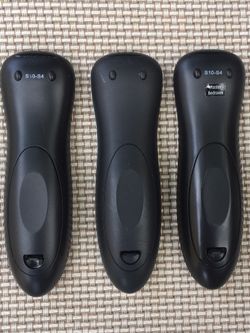

Our preliminary analysis is that AT&T can use such a simple design because its HD video is encoded at approximately 5 Mbps compared to 5-8 Mbps for HDTV over satellite and 16 Mbps for HDTV over cable. U-Verse's comparatively low HD video bitrates are allowing them to use a relatively inexpensive 2x2 dual-band 802.11n Wi-Fi radio based on the BRCM4717 for this application. Stephen Froehlich, a senior analyst with IMS Research's Consumer Electronics group states, "AT&T appears to be using the extreme compression of their video as a competitive advantage. This is the first set-top box that IMS Research has observed beyond those from the Turkish company AirTies that is designed to receive pay-TV over a Wi-Fi interface. The Cisco ISB7005 for AT&T U-Verse cleared the FCC today. We suppose there's a market for this as only like 90 percent of TVs have coax running to them already - and no new house is built these days without 'em - but we have tried to stream HD via WiFi and it shouldn't come as much of a surprise that it doesn't "just work." Of course the fact that U-Verse's H.264 streams are pitifully over-compressed should help, but even when you add that to the great performance of 802.11n, we suspect you'd still be better served by a good ol' copper wire.ĪT&T Dares Cable Cos. Nope, AT&T and Cisco obviously don't think those are worthy ideas, and instead, this new box simply works without a coax cable. You were probably thinking it'd be cool to stream viral internet videos to the big screen without switching inputs, or maybe you thought it'd be cool to ditch the cable modem and WiFi access point and feed your laptop internet via the same box you deliver your HD with. Adding WiFi to a cable set-top box is probably something every geek has thought would be a great idea, but we suspect you and AT&T aren't on the same page.


 0 kommentar(er)
0 kommentar(er)
